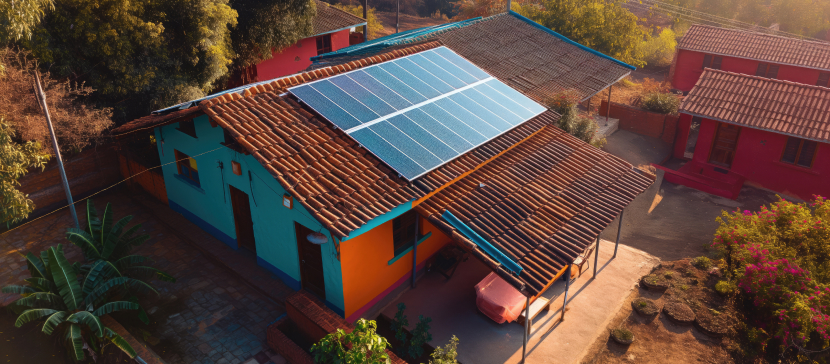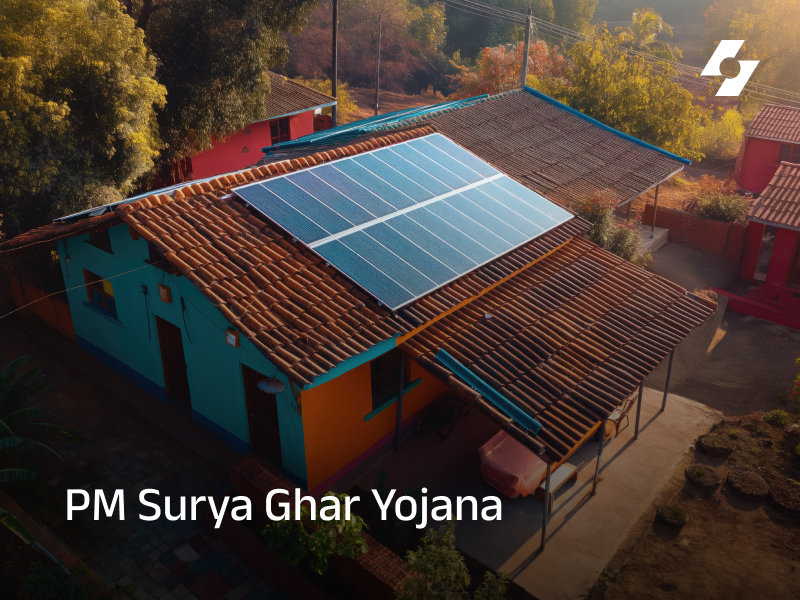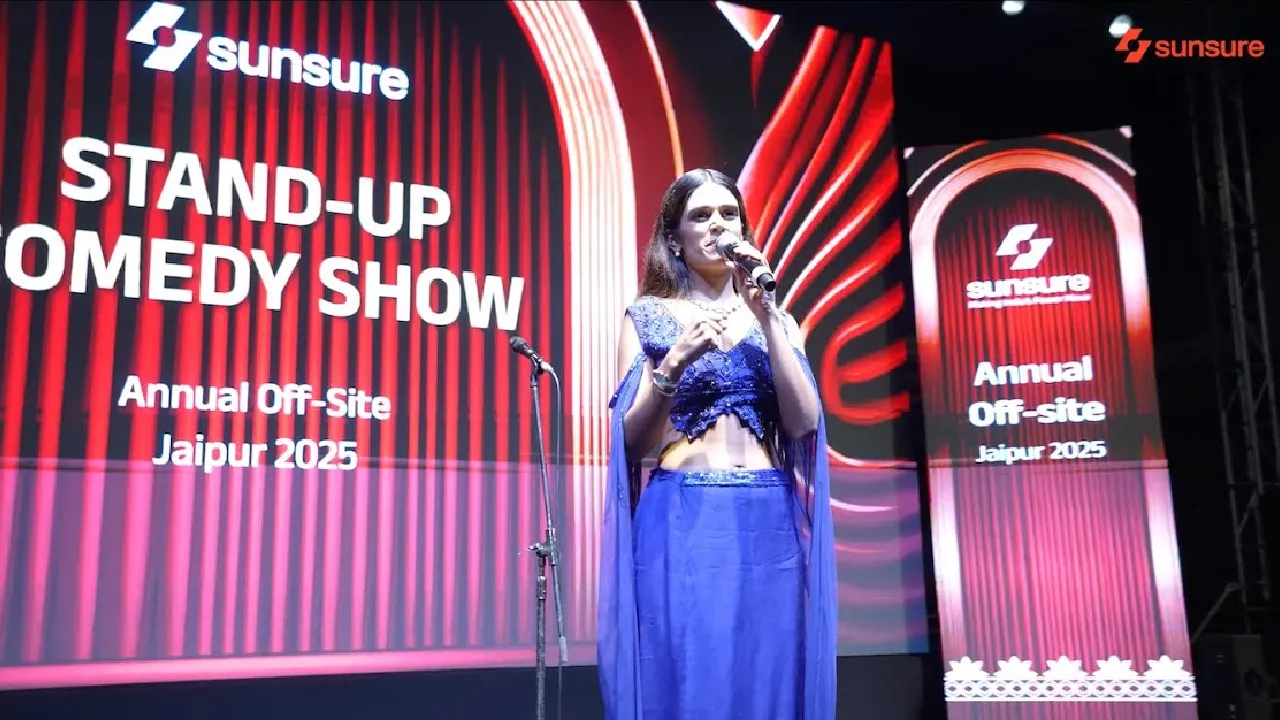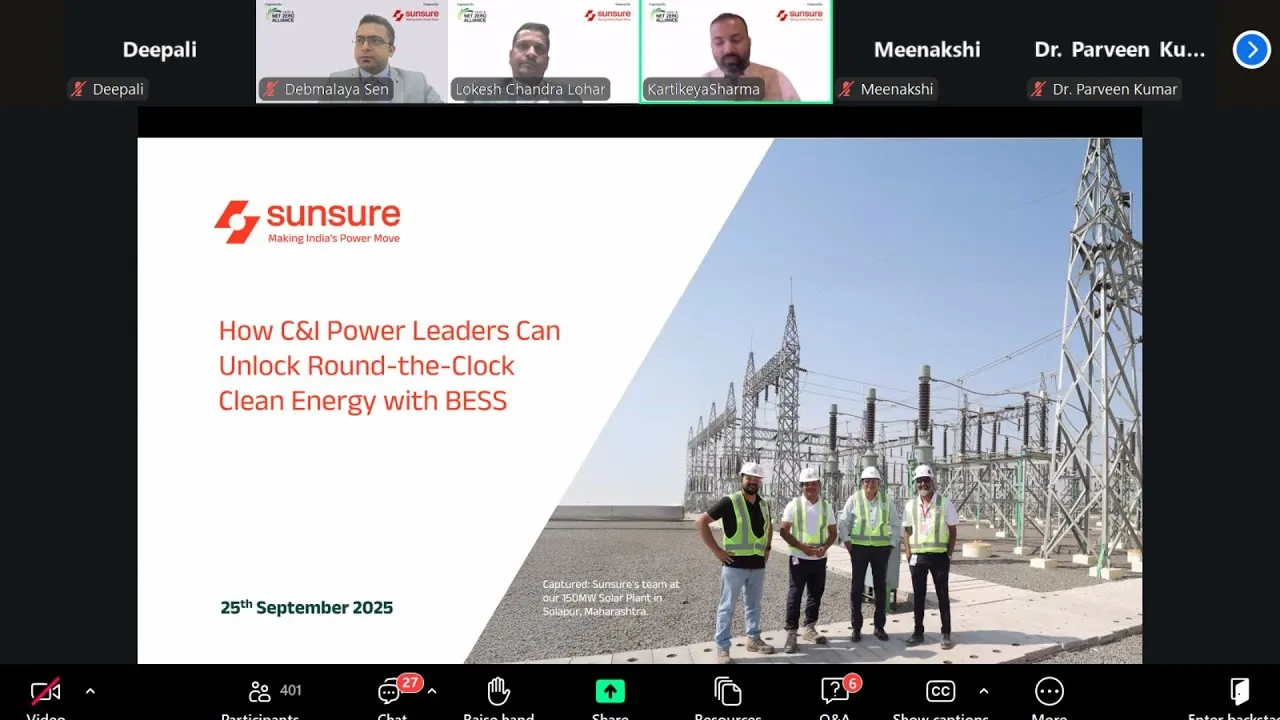The electricity generated from a solar plant is a type of renewable energy with zero harmful emissions in the environment. However, most people are not aware of its advantages or assume that they cannot afford it due to its initial set-up cost which was the case previously.
To solve the high-cost problem and increase renewable energy usage, the Central government has launched the solar subsidy scheme PM Surya Ghar: Muft Bijli Yojana. According to our finance minister, a total of 1 crore households will get the subsidy and generate 300 units of free electricity every month.
The government solar panel scheme provides subsidies for installing on-grid solar systems and the eligible house owners will get a subsidy after the installation of a new solar system. Additionally, this scheme will promote the domestic manufacturing of solar panels.
If your state government provides subsidies for solar installations, you can combine the state and central subsidies to maximize your savings. In this blog, you will get detailed information of the PM Surya Ghar Scheme.
What is PM Surya Ghar: Muft Bijli Yojana?
PM Modi launched the PM Surya Ghar: Muft Bijli Yojana on 13 February 2024. Under the scheme, beneficiaries can get subsidies of up to Rs. 78,000 for installing rooftop solar systems. The scheme will be applicable till 31 March 2027. crore
Key Objectives of PM Surya Ghar: Muft Bijli Yojana
Here are the main goals of the solar rooftop yojana:
- Providing up to 300 units of free electricity per month to 1 crore households.
- Production of 1000 billion units of renewable electricity.
- Reduction of 720 million tons of CO2 equivalent emissions over 25 years of a rooftop solar system’s functioning.
- Development of the solar ecosystem in the country. It covers the development of manufacturing facilities, a network of vendors, regulatory support, supply chain, operation and maintenance facilities.
- Employment generation in the solar industry.
- Powering 1 village per district with solar power.
- Support technologies like solar-powered pumps, solar lighting systems, solar-based water systems, and solar street lights in villages.
- Helping India achieve its Nationally Determined Contributions (NDCs) at UNFCCC by installing 30 GW of rooftop solar capacity by 2026-2027.
Here’s a breakdown of the financial outlay for the scheme:
| Components of PM Surya Ghar |
Financial Outlay |
| Central Financial Assistance (CFA) to
residential consumers |
Rs. 65,700 crore |
| Incentives for DISCOMs |
Rs. 4,950 crore |
| Incentives for local bodies |
Rs. 1,000 crore |
| Model solar villages in each district |
Rs. 800 crore |
| Innovative Projects |
Rs. 500 crore |
| Payment security mechanism |
Rs. 100 crore |
| Capacity building (1% of CFA) |
Rs. 657 crore |
| Awareness and outreach (1% of CFA) |
Rs. 657 crore |
| Service charges (1% of CFA) |
Rs. 657 crore |
| Total |
Rs. 75,021 crore |
Benefits of PM Surya Ghar: Muft Bijli Yojana
Here are the major benefits of the PM Surya Ghar: Muft Bijli Yojana:
1. Reduction in Cost of Installing Solar System
The Bharat Sarkar Solar Panel Yojana can significantly reduce the cost of installing a rooftop solar system. Here’s a breakdown of the subsidies available under the scheme:
|
Average Monthly Electricity Consumption
|
Capacity of Solar Plant
|
Subsidy Amount
|
|
0-150
|
1-2 kW
|
Rs. 30,000 to Rs. 60,000
|
|
150-300
|
2-3 kW
|
Rs. 60,000 to Rs. 78,000
|
|
>300
|
More than 3 kW
|
Rs. 78,000
|
2. Increase in Solar Capacity and Promotion of Renewable Energy
PM Surya Ghar is expected to add 30 GW of solar capacity via residential rooftop solar systems.
India aims to generate 500 GW of renewable energy by 2030. By 2070, India wants to reach the target of net zero emissions. The installation of solar panels and the usage of solar electricity will help India achieve its international clean energy targets.
3. Reduced Reliance on Fossil Fuels and Less CO2 Emissions
The scheme is expected to reduce CO2 emissions by 720 million tonnes over the 25-year lifespan of these solar systems. Fossil fuels are finite and they contribute tremendously to CO2 emissions. Government solar schemes like PM Surya Ghar will encourage people to install rooftop solar systems and use solar electricity. Thus it can help to reduce the usage of fossil fuels.
4. Development of the Solar Industry and Employment Generation
PM Surya Ghar scheme is expected to generate 17 lakh jobs in the manufacturing, installation, logistics, sales, supply chain, and maintenance of solar systems. The solar panel installation government scheme will increase demand for solar panels and other solar system equipment, thus boosting the domestic solar industry. As per the Finance Minister’s interim budget speech, it is expected to lead to entrepreneurship opportunities for solar vendors.
5. Charging of Electric Vehicles
Finance Nirmala Sitharaman in her interim budget speech said the govt solar panel scheme will promote the charging of electric vehicles (EVs). This will increase the adoption of EVs and reduce vehicular emissions.
Eligibility Criteria for PM Surya Ghar: Muft Bijli Yojana
The following are the key eligibility criteria for the PM Surya Ghar: Muft Bijli Yojana
- Solar Panels Must be DCR-Certified and ALMM-listed
DCR and ALMM stand for Domestic Content Requirement and Approved List of Models and Manufacturers respectively.
A solar panel earns DCR certification if all its components, including the solar cells, are made in India. The Ministry of New and Renewable Energy (MNRE) brings out the ALMM list. ALMM is a list of solar panel models and manufacturers which are approved by the MNRE for implementing government schemes. While
1. Using On-Grid Solar Systems
To be eligible for the solar rooftop yojana, you must install an on-grid solar system. In an on-grid system, the solar system is connected to the DISCOM’s grid, and the electricity generated by the solar system is stored in the DISCOM’s grid.
2. DISCOM Must Be a Part of the PM Surya Ghar Scheme
Your DISCOM must be a part of the PM Surya Ghar scheme for you to get the subsidy. To check the list of DISCOMs which are a part of the government solar panel scheme, you can visit the portal of the PM Surya Ghar scheme.
3. Your Vendor Must be DISCOM-Empanelled
To receive the subsidy, you must ensure that the vendor who installs your solar system is empanelled with your DISCOM. You can find the list of vendors who are registered with DISCOMs on the official website of PM Surya Ghar.
Application Process for PM Surya Ghar: Muft Bijli Yojana
You can follow these steps to apply for the Bharat Sarkar Solar Panel Yojana:
- Visit the PM Surya Ghar scheme website.
- Click on ‘Apply for Rooftop Solar’.
- Click on the “Registration” tab.

- Enter the name of your state, district, DISCOM, consumer account number, captcha code, and mobile number to finish your registration.
- Now you need to log in by entering your registered mobile number and the captcha code.
- Submit the required details in the online application form.
- According to the details submitted in the online application, your DISCOM will verify your application.
- Once the verification is complete, the DISCOM will provide a feasibility approval for installation.
- Now you need to check which vendors near you are empanelled with your DISCOM. Seek quotations for solar installation and contact a vendor for solar installation.
- Once the solar system has been installed, you need to apply to your DISCOM for a net metering connection.
- The DISCOM will install the net meter and check it.
- The DISCOM will generate a commissioning certificate from the PM Surya Ghar website.
Now that you have received the commissioning certificate, you must provide your bank details and a cancelled cheque through the PM Surya Ghar website.
You will receive the subsidy in your registered bank account in 30 days.
Future Prospects of the Scheme and its Impact on the Overall Development of the Country
Future Prospects of the Scheme and its Impact on the Overall Development of the Country
Conclusion
Installation of solar systems under the government solar panel scheme is expected to cross 10 lakh by March 2025 and reach 40 lakh by March 2026. The aim is to reach the target of 1 crore solar installations by March 2027. The scheme will lead to major savings for households, reduce CO2 emissions, and lead to job creation in the solar industry.
The “Model Solar Village” component of the scheme allocates Rs. 1 crore to each model village. It will lead to a strengthening of the rural economy and energy self-reliance. Overall, the scheme aims to harness India’s solar potential to meet energy needs and fulfil global climate change targets.







